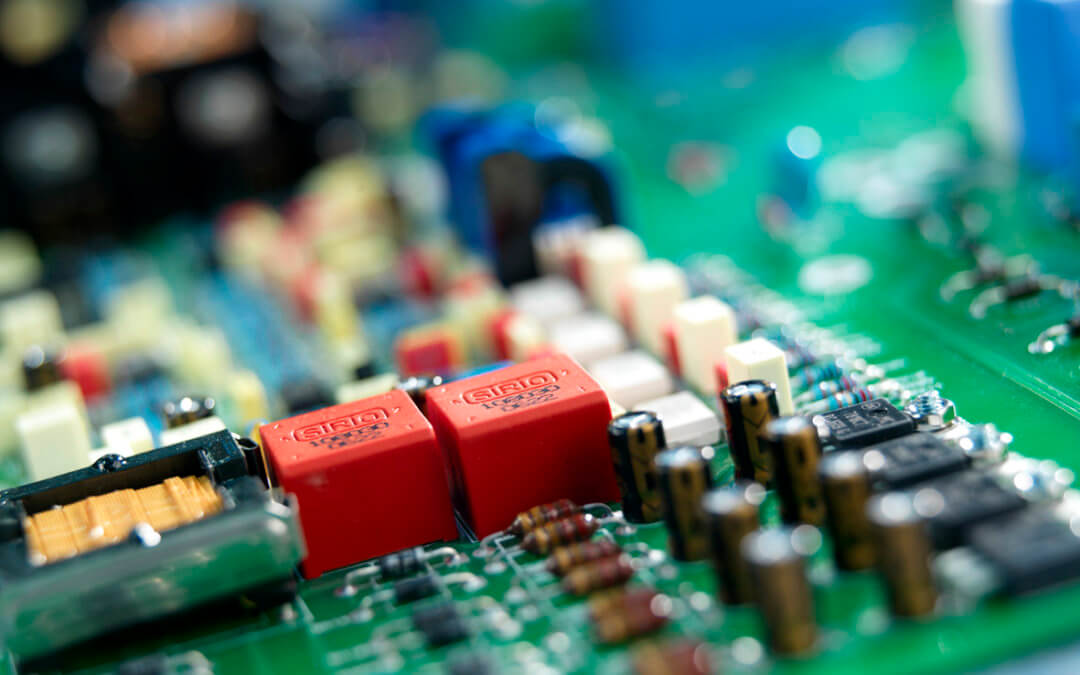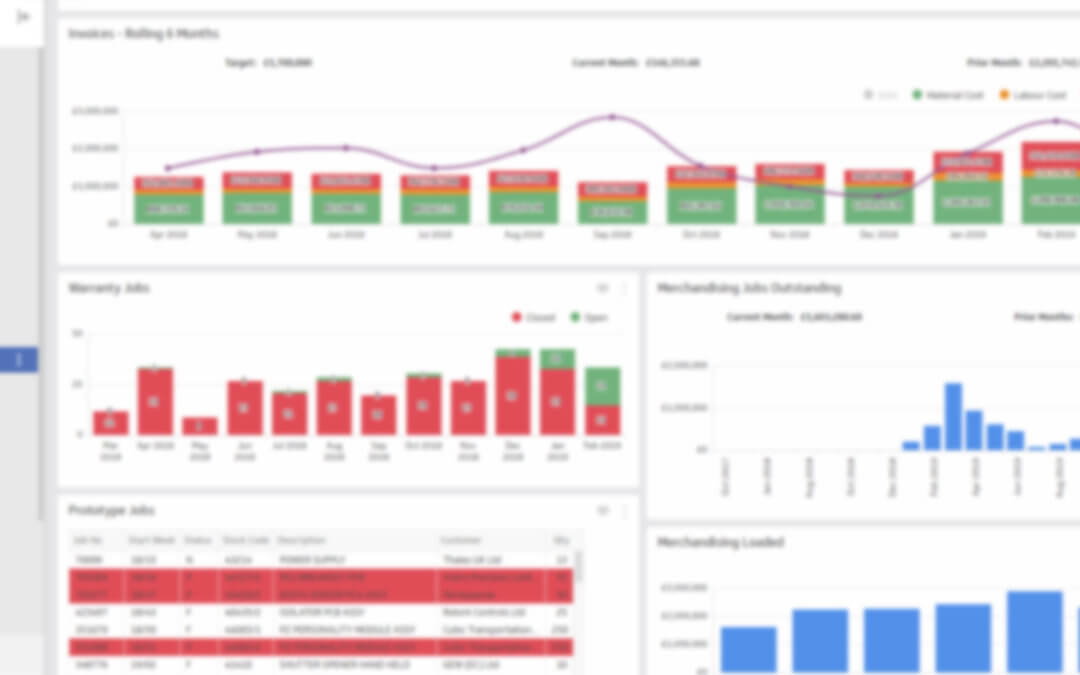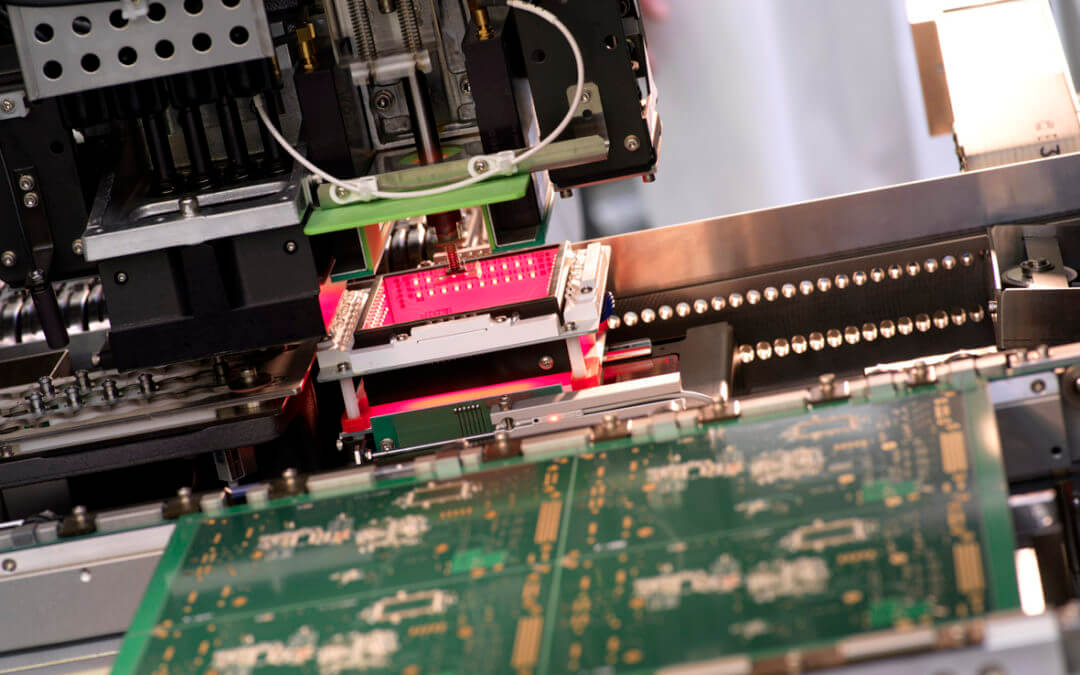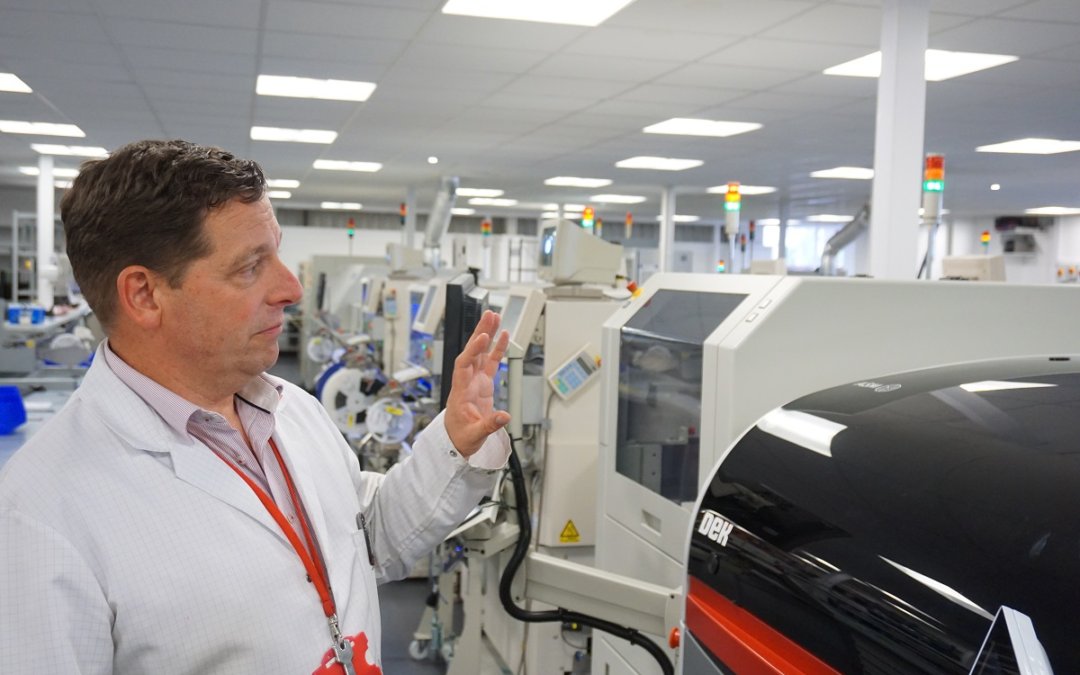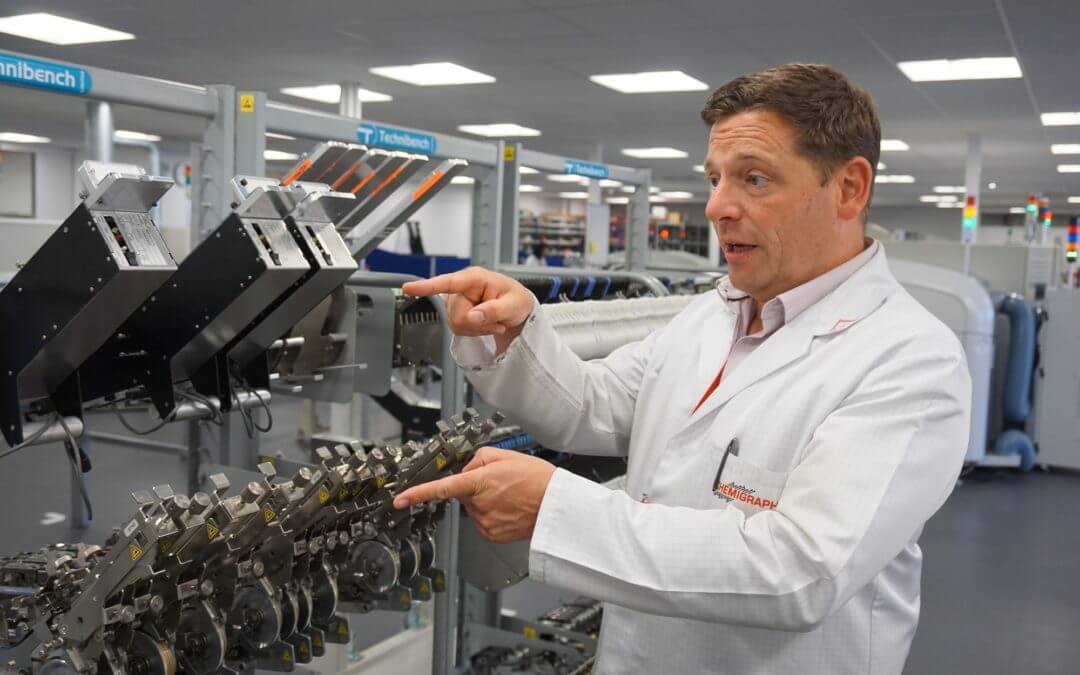Who is this guide for?
This guide to OEM outsourcing will talk you through the things to consider when you choose your EMS partner.
You’ll find out when it makes sense to outsource, what the implications can be and what benefits outsourcing can deliver.
You’ll also learn about outsourcing beyond contract manufacturing and how your EMS partner can add value to supply chain management, design, testing and logistics.
This guide is for:
- Established OEMs operating at production capacity or no longer wishing to maintain a production environment
- Frustrated designers who have hit a ‘design wall’ and need a fresh pair of eyes
- Innovative start-ups lacking manufacturing know-how
- NPI teams wanting to reduce risk through improved supply chain management and product testing
In fact, if you’ve ever wondered exactly who would make an ideal outsourcing partner, then this guide is for you.
Outsourcing today: from EMS provider to EMS partner
Outsourcing is now a well-established part of electronics manufacture – and it has been so since the 1990s.
Just glance at any list of the top 50 electronics firms and you’ll find a number of EMS companies among them.
As the importance of outsourcing has grown, the nature of the relationship between the EMS and the OEM has changed.
In its guide to selecting an EMS provider, IPC observes that:
‘EMS companies have transformed themselves from board stuffers (consigned parts) to contract manufacturers (turn-key: buying the parts and performing the assembly) to offering a complete range of services including product design and product build.’
Surveying the contemporary electronic manufacturing landscape, PwC agrees:
‘Many electronic manufacturing services (EMS) companies are providing new services along the spectrum. At one end, they’re offering more design services, for either sub-assemblies or finished products. At the other end, they’re offering more testing services. The more services EMS providers offer, the more they move into new models of joint design manufacturing (JDM) and outsourced design manufacturing (ODM).’
Which is to say that EMS providers have become critical, strategic long-term partners rather than occasional, one-off providers used tactically for operational support.
This collaborative approach makes it increasingly important to select your EMS partner carefully. In this guide we’ll show you how to make the best choice.
We’ll look at:
- Why OEMs outsource
- The factors to consider when outsourcing
- How to find a perfect partner
- And we’ll talk you through some of the services you can expect, including product design, procurement, NPI, testing and logistics
Discover the range of services Chemigraphic can offer you
Explore the markets we serve

Why OEMs outsource
‘The traditional integrated firm is not necessarily the best way to create value. Today, almost any organization can gain access to resources. What differentiates companies now is their intellectual capital, their knowledge, and their expertise – not the size and scope of the resources they own and manage. As a result, outsourcing is being adopted by firms from across the corporate spectrum. No firm is too large or too small to consider outsourcing.’
Michael Corbett, founder IAOP
Here are five compelling reasons to outsource.
1. To gain focus
Outsourcing allows you to focus on your core skills and competencies.
By placing areas of your manufacturing process in the hands of trusted partners, it allows you to concentrate on what you do best.
For many established OEMs this can be R&D or sales rather than upstream supply chain management and production. And that’s a great reason to outsource.
Many start-ups simply don’t have the capital to invest in their own production or design. And outsourcing enables them to acquire these skills without the wait.
2. To gain competitive advantage
Competitive advantage can come from outsourcing for better tech, greater cost-efficiencies or acquisition of talent.
For example, OEMs are realising that onsite machine shops often sit idle – and that is neither efficient nor cost-effective. Often this ‘hidden cost’ is brought starkly to light when new tech becomes available – especially in cases like processes such as SMT assembly, where increasingly sophisticated and costly equipment is being used.
Outsourcing can remove a cost centre and help you gain a competitive advantage.
3. To gain capacity
Capacity ceilings are frequently hit by those with long sales cycles, but they can also be reached by anyone whose marketing hits that sweet spot. Outsourcing offers both a solution without the overheads.
It’s not just your plant’s capacity that can impact on your speed to market: sometimes recruitment may fail to deliver the required talent or available capital may constrain your investment in equipment upgrades.
4. To gain cost control
Outsourced manufacturing can offer a fixed unit price for products.
This is because EMS companies have a larger customer base and can agilely adapt their means of production across a range of resources. This agility means your EMS can minimise the cost impact of changing demand and maintain a fixed price.
5. To gain expertise
Outsourcing adds talent and capabilities without any asset-related investments. This gives you greater cash flow and financial flexibility.
Whether you are looking to take advantage of a partner who sits closer to the upstream supply change, has a larger design team or can reduce your lead times and improve your on-time delivery rates, outsourcing is a strong option to consider.
Find out more about why OEMs outsource
Discover exactly what we offer you

Factors to consider when outsourcing
‘If the choice [of an EMS partner] is that critical, should low cost be the only driver in the selection decision?
The answer is obviously “no” – not when the stakes are so high.
Companies should not focus on tactical cost reductions but should focus on performance superiority, often called Total Acquired Cost. Differences in hard costs such as freight and duty as well as soft costs such as cost of quality, time to market and excess travel expenses are a part of this.’
‘How to begin the process of selecting an EMS provider’ by the IPC EMS Management Council
Outsourcing is a critical business decision: here are the things to consider and the implications to bear in mind when you select your EMS partner.
Complete or partial outsourcing?
The rule of thumb here is to outsource as much as possible to the subcontractor – simply because this is how you can gain the most benefits.
But there may be some technical aspects of the build process that you need to keep inhouse. For example, you have a product that can measure tiny particles of a specific gas in an environment. For this it would make sense to use the specialist test equipment you have already developed as it would be costly for your EMS to replicate it.
Free issue or outsourced procurement?
One of the major benefits of outsourcing is being able to take advantage of the contacts, control and management of the supply chain that your EMS offers. Free issue offers few advantages and many disadvantages.
While free issuing allows you to maintain control over part or all of the component procurement process, it is important to ask yourself if you want to be an expert upstream supply chain manager or a successful seller of electronic devices.
Free issuing presents a number of potential blocks to realising the benefits of outsourcing, not least of which is the need to handle the supply chain yourself and maintain a warehouse to hold stock. In addition, you take responsibility for making sure all parts are genuine and available in sufficient quantities at the right time. Delays caused by this are down to you, whereas a trustworthy subcontractor will have end-to-end processes in place to effortlessly merge the management of the supply chain with the requirements of the assembly line.
The question of offshoring
To offshore, or not to offshore: that is the question. And the answer is far from clear cut. For many situations the cost savings offered by an offshore EMS are greatly outweighed by other factors.
These factors include hard costs, such as transporting products from, say, China to the UK and other soft costs that affect your ability to deliver quality product in a timely manner, such as higher inventory pipeline levels, schedule flexibility and processing of change orders.
Even cost savings are not guaranteed. For example, the greatest cost savings with offshore production are usually found with simpler circuits requiring a good deal of manual labour. The cost difference is radically different for more complex, highly automated assembly.
Here are some of the other factors that can make a difference in deciding whether to offshore or not to offshore.
- Product maturity
Offshore sourcing best suits mature products because inventory pipeline, quality and schedule risks increase substantially with change orders
- Engineering
Design changes tend to take longer and the review process can be much more protracted
- Component substitutions
Offshore sources tend to use more unauthorized component substitutions which can impact performance and product certifications
- Transportation costs
Larger products are expensive to ship by air -mand shipping by sea can add over a month to the delivery cycle.
- Inventory risk
This is greater with an offshore sourcing because of the longer delivery pipeline
- Schedule flexibility
This important consideration is often overlooked but domestic partners tend to be more tolerant of schedule volatility.
- Confidentiality
Standard non-disclosure and non-compete agreements are much more difficult to monitor and enforce with offshore sources
Implications of outsourcing
Outsourcing is a business decision and it will impact on most areas of your business. Here are some critical implications to be aware of.
- Staffing
If you are moving an area of your business from inhouse you should have HR involvement as early as possible in the process – all UK businesses must comply with the Transfer of Undertakings (Protection of Employment) (TUPE) regulations
- Plant and equipment
A decision will need taking as to whether to dispose of or sell any existing plant and equipment
- Suppliers
You may have to review existing arrangements with suppliers – and, if you have long-standing relationships, explore if these can be transferred to your subcontractor
- Customers
Particularly if you are producing a specialist, niche product for just one or two customers you should communicate your intentions and explain your rationale for making the change
How to find your perfect EMS partner
‘Don’t just buy on price: consider the total cost of doing business with a supplier, including variable costs and intangibles such as the culture fit between your team and its teams. Pay less attention to price and more to securing a partner that can offer minimal risk and top-notch efficiency.’
Tony Allan, Medical Product Outsourcing

It is critical that you are 100% clear about your objectives and the outcomes you seek. Once these are understood and agreed upon, you’ll know instantly if you have found a potential EMS partner or not.
1. Define your requirements
Your objectives will vary depending on whether you are looking to outsource a single product, shift production to a higher capacity partner or are decommissioning your entire manufacturing plant.
What’s important, however, is that your objectives are clearly expressed and agreed upon by all involved. It is also vital that you prioritise your list, so that those that are critical are separated from those that would be ‘nice to achieve’.
For example, you may want to work with an EMS partner located within reasonable travel distance. Or, perhaps, you are looking for a partner with both UK and European manufacturing facilities? Or, it may be that there are complexities involved in the manufacture of your product – such as electro-mechanical builds – that must be met by your partner?
Ensure that you consider ‘softer’ factors alongside ‘hard’ requirements. The cultural fit of two organisations can impact on the long-term relationship. This can be difficult to quantify but the following tangible areas can often help you to determine whether there is a fit or not:
- MRP/ERP system capabilities
- Purchasing strength
- Supplier relationships (both onshore and offshore)
- Responsiveness and flexibility
- Experience
- Business practices
- Other customers (size, type, length of relationship)
2. Start your search
The selection process can be long, so it’s vital that your list of objectives is constantly referred to and amended should things change.
Most OEMs will combine internet research with word-of-mouth recommendations to produce a shortlist of around ten potential suppliers. Typically, these will be whittled down to three or four strong candidates.
3. Find your potential partners
This is where you really start to dig deep.
Having shortlisted your suppliers a pre-qualifying questionnaire will place flesh on the bones. Tell each about yourself, your products and your objectives. And ask them some questions to find out if they really do offer a potential fit.
Based on the responses you should be able to whittle down your potentials to two or three.
At this point making a site visit is essential. This will give you a sense of the company, its culture, people and capabilities. And, often, it is more instructive than the boardroom-based sales pitch and presentations you will also invite.
Alongside the informal site visit, you should also source your own formal references and commission financial checks.
4. The nitty gritty
Your RFQ should include estimated annual quantities for the products you require, typical order batch sizes and frequency of orders.
If the product includes drawn items these are likely to have additional tooling charges applied to them unless you specify using an existing supplier.
Make sure you are able to deliver a large amount of data – and be prepared to be asked for more. As a minimum you’ll need the Bill of Materials (BOM), drawings for parts, production build packs, manufacturing/test data, Gerber information and CAD data.
While the RFQ is being completed now is the time to arrange to audit the operations of each potential partner.
You’ll want to quiz all the key people who could be overseeing the manufacture of your product: this may include Production/Operations Manager, Quality Manager and the proposed Account Manager. Ask them to explain how they envisage managing all of the elements of your manufacturing – and make sure it feels seamless.
You should also carry out a quality audit of their processes and procedures. What controls are in place? How do they manage risk? How do they manage change?
If you have ethical values in place concerning waste, recycling, power usage, supply chain management or staffing then explore these thoroughly too.
Once your site audits and RFQs are completed, it’s time to discuss with your team and make the final decision.
Aspects of outsourcing: design
Increasingly as well as outsourcing procurement, build, test and distribution processes OEMs are also outsourcing design.
In many ways your EMS partner is ideally placed to understand the relationship between your design and manufacturing requirements. They already understand your business and its products and have demonstrated a commitment to a long-term relationship based on trust.
Using them enables you to liaise with a single supplier while still gaining the advantage of external designers who can bring fresh insight and solutions as you work on new products.
And, of course, design and manufacture go hand-in-hand: the closer and earlier they communicate the less issues you will face.
For this reason, even if you are not outsourcing your design, it makes business sense to involve your EMS partner at the early stages of the design process – changes at this stage have much less cost and project impact than changes at manufacturing.
Aspects of outsourcing: New Product Introduction (NPI) and testing

It’s critical that you assess your EMS partners New Product Introduction (NPI) process as part of your selection.
There is a wide range of processes used to manage the production of new products and it’s vital that you understand exactly how your EMS partner is managing theirs.
Any product or product variant that is being built for the very first time must be put through an NPI process to reduce risk and increase efficiencies. Above all, you need to ensure that future production volumes can be met cost-effectively and quickly.
This goes well beyond Surface Mount Technology (SMT), Plated Trough Hole (PTH) and final assembly. It is the inspection and test that can really make or break things here. It is essential that the Manufacturing Defects Analysis (MDA) involves AOI and X-ray and that testing incorporates in-circuit, flying probe, electrical safety and functional tests alongside boundary scans.
Aspects of outsourcing: assembly
How much of your shop floor do you intend to transfer? Outsourcing PCBA assembly, for example, is a tried and tested approach but you may be missing out on the greater efficiencies that can be gained by creating a clear divide between the OEM and the EMS in terms of assembly responsibility.
Here are some things to consider when you outsource your assembly.
- Knowledge Much of the expertise required to build and test your products may well reside only in the heads of your staff. Working out a way to transfer this is essential.
Even if you have assembly documentation things may have evolved on the shop floor and not be reflected in a paper trail.
It’s highly possible too that your existing staff may need re-training to take on new responsibilities.
- Plant and Equipment You’ll need to decide on a case by case basis whether to dispose of plant and equipment, sell it on or transfer it across to your EMS.For test equipment that is specifically calibrated, if you want your EMS partner to test your product but plan to retain other products sharing the same test inhouse, a second piece of equipment must be bought.
- Stock One of the immediate benefits of outsourcing is your reduced raw material stock holding.You need, however, a plan to deal with what you have. Most EMS partners will be happy to take on key items that have been stored correctly and are priced in line with current market value.in accordance with manufacturer’s guidelines, are the correct revision (including bare PCBs, programmable items) and remain cost neutral – i.e. the unit cost they pay from you is the same as the price they would pay new through the supply chain.
Aspects of outsourcing: logistics
In its simplest form, outbound logistics concerns the storage, transportation and distribution of your products.
Typically, your EMS partner will allow you to call-off products when you need them. They will be delivered in their own branded packaging.
While this allows you to inspect it before it is sent out it is also fairly inefficient. You must maintain a layer of logistics overheads that are not strictly necessary – and this adds time and expense to each order.
Most low volume, high complexity (LVHC) products will require some degree of configuration, but this can be carried out by your EMS partner during manufacturing.
In the current market, the speed of order to fulfilment is a competitive advantage. B2C companies, such as Amazon and Argos, have created a culture of very fast delivery times, and these expectations have filtered into the B2B market as well.
Your EMS partner can help you by using sophisticated systems and processes such as configure-to-order, late-stage configuration, postponement manufacturing, mass customisation, supply chain pipelining and agile manufacturing.
To achieve this, however, your partner must have invested in the tech and talent to offer you:
- Automated material requirements planning (MRP) systems that link directly to sales forecasts
- Material purchase orders operating in “real time” via electronic data interchange (EDI)
- NPI procedures that document every stage of the product’s journey
- Control systems capable of managing multiple revisions to documentation for build data and engineering changes
And, of course, once the product is out there, you still face the possibility of returns.
Handing over responsibility to your EMS partner, means no longer needing to worry about customers failing to get a repaired unit back from you on time. And you no longer need to hold stock of finished products or spares.
Why choose Chemigraphic as your EMS partner?
Put simply, we help you reduce your time to market and simplify your supply chain.
We are here to work with you so you can focus on the core areas of your business.
We do what we do very well.
And so do you.
We’ll make a great team
